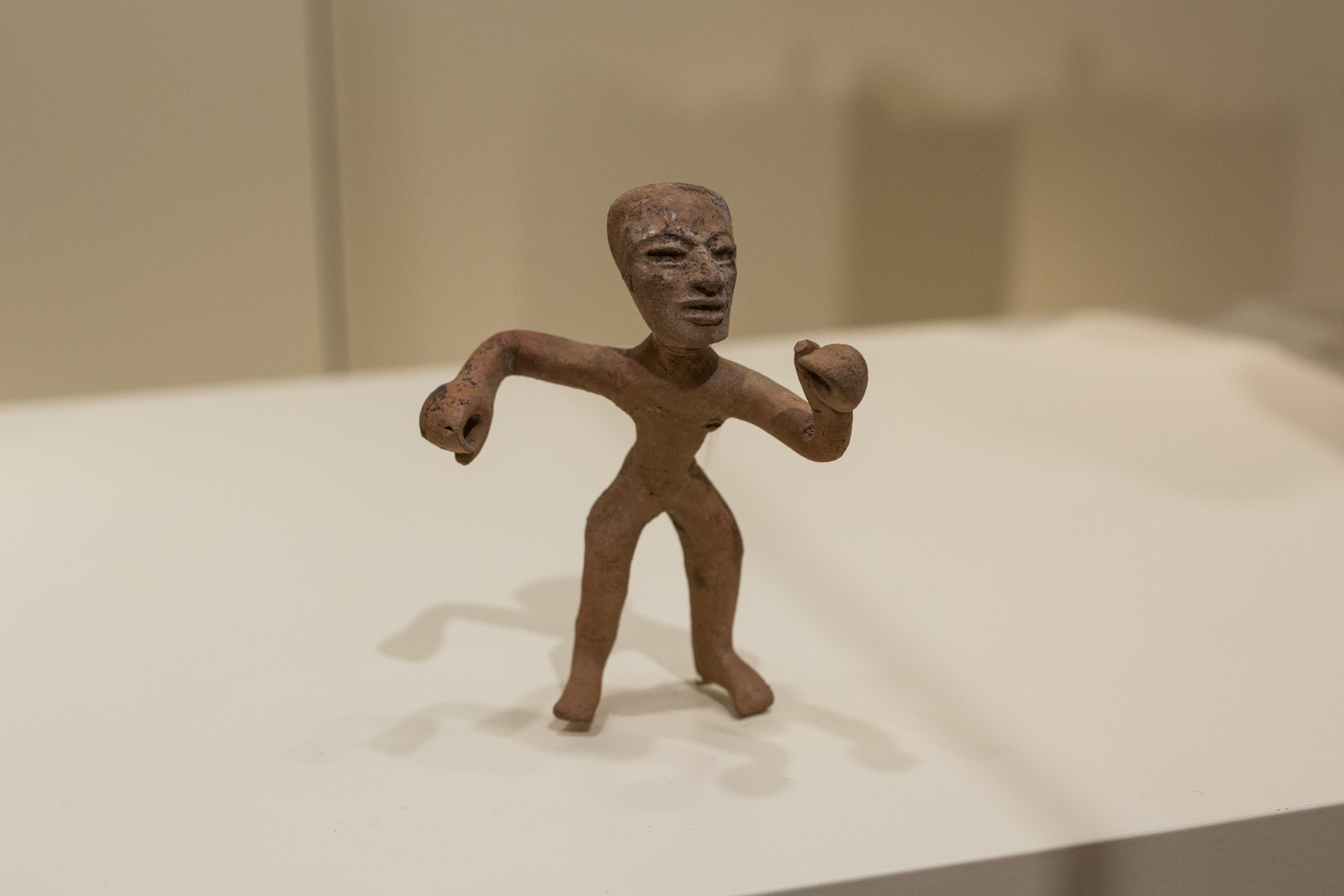Object of the Week: Figure of a Man Dancing

The next time you’ve got an itch to dance, why not come and get a Precolumbian spark from SAM’s Teotihuacán Figure of a man dancing? Standing upright, he strides forward on his left foot, both arms bent at the elbows, with his left arm swinging forward, like he’s in an exaggerated march. It’s a dynamic pose that immediately tells us he’s in motion. Do you not wonder what comes next? Maybe he’s doing an early version of the twist, or struttin’, or putting down a move something like this.
When you look closely at this small ceramic figure, you’ll see a difference in the way the head has been rendered, compared to the rest of the body. The head is detailed, marked by contoured eyebrows, incised eyes, a prominent nose with flared nostrils, and protruding oval lips. Conversely, the arms, legs, hands, and feet are softly rounded and simple in form. Scholarship has shown us that the artist formed the body by hand—making the shape of the arms, torso, and legs very general—but formed the head by pressing clay into a delicate mold.1 This creates a contrast between the suggestive form of the body and the refined detail that appears in the face. The accentuation of the facial features communicates their importance, while the simplified forms of the body seem to be blurred by the vigorous movement of the figure.
Somewhat like classical marble statuary from the Golden Age of Greece, this Teotihuacán figure points back to the high point of an influential, art-centered civilization. Teotihuacán reached its pinnacle of achievement around 350-600 CE, a time when the city spanned nine square miles, and the population reached 200,000.2 We art nerds really geek out about this era because not only had Teotihuacán become a large-scale, international metropolis, but its civilization seems to have supported artists and encouraged their work. The city’s builders constructed massive temples and palaces, painters decorated halls with frescoes depicting the underworld, and artisans innovated new ways to adorn bodies and buildings, shaping fine stones and marine objects into beautiful decoration.3 Many of us are well versed in the ways European cultures have looked back to ancient Greece as a cultural example; similarly, the art and architecture of Teotihuacán became an important influence on the cultures that followed it in Middle America.
SAM’s Figure of a man dancing fits neatly into this picture, too, as one of many anthropomorphic figurines produced in Teotihuacán when the city was thriving. We can learn several things from the artist’s choice of subject. That the figure dances leaves us with a positive impression of a lively existence in Teotihuacán. Second, that this culture provided an environment where folks could use time and resources to produce dancing figurines reflects the value this city placed on its artistic production.
—Jeffrey Carlson, SAM Collections Coordinator